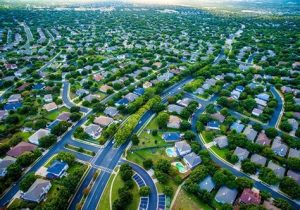Living in urban areas of higher surrounding greenness is associated with lower levels of stress, depression, insulin resistance, diabetes, stroke, all-cause mortality, and cardiovascular mortality.
Green vegetation refers to all plants and trees.
The concept of “Greenness” reflects the long-accepted concept of forest bathing. Forest bathing referred to as “Shinrin-yoku” in Japanese, involves spending time in a natural environment or specifically in a forest environment to improve one’s health and well-being.
as “Shinrin-yoku” in Japanese, involves spending time in a natural environment or specifically in a forest environment to improve one’s health and well-being.
Forest bathing was first proposed in the belief that spending time in a natural or forested area will have healing effects. Forest bathing, through exposure to natural stimuli such as plants, woods, and flowing water in a forest environment, is regarded as a health promotion strategy to achieve relaxation, resulting in a decrease in heart rate and blood pressure, a release of stress, and a boost to the immune system, all of which facilitate recovery from illness.
During forest bathing, individuals are guided to slow down their pace and are soothed through connecting with a forest environment, using their five senses to listen to birds chirping and streams flowing, looking at trees and seeing sunlight penetrate through tree branches, breathing in natural aromas, tasting the freshness of the air, touching leaves and trees, and lying on the ground.
Time spent walking and relaxing in a forest environment (“forest bathing” or “forest therapy”) has well demonstrated anti-stress effects in healthy adults.
In a recent issue of Environmental Health Perspectives, the author of the paper, Zheng reported potential protective effects of neighborhood greenness against incident hypertension.
 Zheng compared levels of residential greenness in Taiwan and found that people living in neighborhoods with lower levels of greenness had a higher risk of hypertension compared with those living in neighborhoods with more green space.
Zheng compared levels of residential greenness in Taiwan and found that people living in neighborhoods with lower levels of greenness had a higher risk of hypertension compared with those living in neighborhoods with more green space.
These findings are particularly noteworthy because they are derived from a large group of 125,537 participants recruited over a 15-year period. This study strengthens the evidence for an association between exposure to greenness and high blood pressure.
The study revealed a 24% lower risk of hypertension for each 0.1-unit increase in green vegetation.
Studies do indeed find that short-term exposure to particulate matter (PM) increases blood pressure and can lead to chronic hypertension.
PM stands for particulate matter (also called particle pollution): the term for a mixture of solid particles and liquid droplets found in the air. Some particles, such as dust, dirt, soot, or smoke, are large or dark enough to be seen with the naked eye.
PM is closely connected to widespread air pollution.
Air pollution is currently one of the most serious public health challenges in the world.
Many of the particles are so small as to be invisible, but when their levels are high, the air becomes hazy and thick and become noticeable. Particulate matter is one of six widespread air pollutants for which there are national air quality standards to limit their levels in the outdoor air.
Certain particle constituents (e.g., metals, organic compounds, and ultra-fine particles are capable of reaching the systemic circulation upon inhalation and thereafter directly impair vascular function.
More and more studies have shown that impaired local and circulating vascular function lead to endothelial dysfunction and the premature onset of coronary artery disease. For review, the endothelium is a fragile membrane that lines the heart and coronary arteries (blood vessels on the surface of the heart).
Additional studies do show that a short-term increase in fine particulate matter air pollution concentration increases the risk for myocardial infarctions, strokes, and heart failure exacerbations.
Exposure to environmental PM can increase blood pressure within a period of a few days while long-term exposure might also promote the development of chronic hypertension.
This has been extensively confirmed in the past decades.
Studies found that the association between exposure and arterial stiffness was decreased by residential greenness.
Of special interest is the fact that the presence of greenspaces in urban environments could have more profound effects than we commonly realize. We find that trees around our homes bring comfort and tranquility. They protect us from harsh urban noise and glaring lights of neighborhood streets, promoting better sleep.
Studies have shown that participants who were exposed to a forest environment experienced a reduction in blood pressure, pulse rate, and heart rate compared to those exposed to an urban environment.
A study conducted in Japan found forest bathing activities were effective at lowering blood pressure and improving negative emotions in working-age adults. A review of 20 studies compared the effects of a forest environment on hypertensive adults of different age groups. It was found that forest bathing (increased Greenness) was effective at lowering systolic blood pressure in hypertensive middle-aged or older people.
So now that spring has officially sprung, why not step out? Take advantage of the beautiful parks that surround us and reap the benefits of enjoying the great outdoors and the best performance of your life!
God bless,
DrB
References:
sciencedirect.com/science/article/abs/pii/S1050173819300908?via%3Dihub
pubmed.ncbi.nlm.nih.gov/33946197/
ehp.niehs.nih.gov/doi/10.1289/EHP13071
pubmed.ncbi.nlm.nih.gov/32814106/
pubmed.ncbi.nlm.nih.gov/34499893/
pubmed.ncbi.nlm.nih.gov/34644154/
pubmed.ncbi.nlm.nih.gov/34332301/
pubmed.ncbi.nlm.nih.gov/38280465/
sciencedirect.com/science/article/abs/pii/S1933171109001053?via%3Dihub
pubmed.ncbi.nlm.nih.gov/36343854/
sciencedirect.com/science/article/pii/S0160412024000503
pubmed.ncbi.nlm.nih.gov/35016929/
pubmed.ncbi.nlm.nih.gov/22948092/
pubmed.ncbi.nlm.nih.gov/27493670/
pubmed.ncbi.nlm.nih.gov/25809507/



